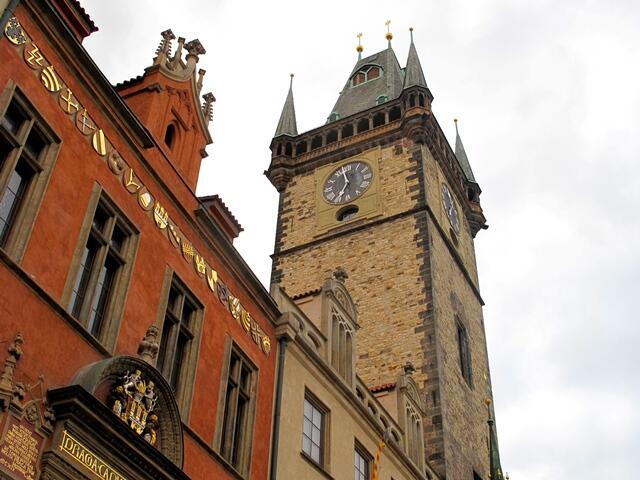Walking around Prague, it’s clear that it’s a city of many layers. But it’s not until you’re able to venture beneath the street level that you realize just how many layers, and how far back in history those layers go. For example, in the 19th century, many streets in Prague were raised by one full story from their original level as a way to avoid constant flooding from the Vltava River, which was a frequent problem for anyone living along its banks.

I recently had the chance to go underground in Prague, below the current street level at one of the city’s oldest buildings, the Old Town Hall in the eponymous Old Town Square. If you’ve never been to Prague, you may not recognize the Old Town Hall. Among the myriad other gothic, baroque and classical buildings, it doesn’t necessarily stand out all that much. However, you likely would be familiar with one of the most famous sights of the Czech capital that is right on the side of the building: the Astronomical Clock. A visit to the clock, while very touristy, is worthwhile to admire the 15th century engineering of this fascinating instrument, which was used to show positions and phases of various astronomical bodies.
12th Century Beginnings
However, there is much more to the Old Town Hall than just the Astronomical Clock. The oldest parts of the structure date back to the 12th century, but the original use of much of what remains of the foundations is unknown or disputed due to the fact that the vast majority of the city’s records were lost during the fire of 1689. Nonetheless, a remarkable amount has been uncovered about how the space was used.

The first thing that struck me upon entering the now subterranean world of what was originally the street-level entrance of the Old Town Hall was just how quiet it was. The Old Town Square, from where you enter the building, is bustling with tourists, street performers, cafés and restaurants, and can be a little overwhelming. But as soon as you go underground, the sounds of tour groups, buskers and modern life melt away and you become completely enveloped in a cocoon of silence.
Beneath the Old Town Hall: Kitchens, Breweries and Torture Chambers
There is pretty good evidence that several of the rooms below the Old Town Hall were originally used as dungeons or torture chambers for religious prisoners. Walking through them now, it’s uncomfortable to imagine people being persecuted because of their religious beliefs by being thrown into a pit full of other prisoners and left there to starve to death.

Other rooms are believed to have been used as kitchens, tanneries and breweries. The only place I visited beneath the Old Town Hall where I had any sense of the outside world carrying on around me was the space directly below the Astronomical Clock, from where I could hear people walking on the street level above, chattering and admiring the clock.
The Secret of the Astronomical Clock
A small, insignificant-seeming door was pointed out to me at the top of the room, behind which were the controls for the famous clock. Apparently, there is only one person in the world who knows how the clock works, and he comes once a week, climbs a ladder to that door, and works in secret to check that everything is running smoothly.

So it could happen one day, if this man who knows the secret of the clock suddenly drops dead, that Prague’s most famous sight will be left without a guardian. And then what happens if it unexpectedly stops working? You may not be able to watch the Astronomical Clock in action on the hour, every hour, but at least you’ll still be able to visit the fascinating world beneath the Old Town Hall.
Want to get to know Prague’s Old Town? Why not take a Prague Food Tour? More than just food, you’ll uncover all the Old Town’s cultural and historical secrets along the way…








